#Blog Publishing Tool
Explore tagged Tumblr posts
Text
Blogging Platforms are solutions that allow you to create, publish and manage your blogs.Read on to find answers to all that.
#Blogging Platforms#Blogging Solution#Blogging Software#Content Management System#Blog Publishing Tool
0 notes
Text
Master Dialogue Writing Techniques for Engaging Fiction (For Writers)
(Beware, long post!)
As fiction writers, we all know that effective dialogue is essential for bringing our stories and characters to life. After all, the way our protagonists, antagonists, and supporting players speak to one another is one of the primary ways readers get to know them on a deep, intimate level. Dialogue reveals personality, uncovers motivation, and propels the narrative forward in a way that felt narration simply can't match.
But nailing natural, compelling dialogue is easier said than done. It's a craft that takes serious skill to master, requiring writers to have a keen ear for authentic speech patterns, a nimble handle on subtext and implication, and the ability to strike that delicate balance between being true to real-world conversation while also keeping things snappy, dynamic, and laser-focused on the story at hand.
If you're someone who struggles with crafting dialogue that truly sings, never fear. In this in-depth guide, I'm going to dive deep into the techniques and best practices that will help you elevate your dialogue writing to new heights. By the end, you'll have a toolbox full of strategies to ensure that every exchange between your characters is as gripping, revealing, and unforgettable as possible.
The Fundamentals of Effective Dialogue
Before we get into the more advanced nuances of dialogue writing, let's start by covering some of the foundational principles that all great fictional conversations are built upon:
Reveal Character One of the primary functions of dialogue is to give readers a window into who your characters are as people. The way they speak — their word choices, their tone, their body language, their turns of phrase — should provide vivid insight into their personalities, backgrounds, values, quirks, and emotional states.
Think about how much you can glean about someone just from how they communicate in real life. Do they use a lot of slang and shorthand? Are they verbose and flowery with their language? Do they struggle to make eye contact or fail to respond directly to questions? All of these subtle linguistic cues are powerful tools for crafting multi-dimensional characters.
Drive the Plot Forward While revelations about character are crucial, you also want to ensure that your dialogue is constantly pushing the story itself forward. Each exchange should feel purposeful, moving the narrative along by introducing new information, triggering plot points, creating conflict, or prompting characters to make pivotal decisions.
Dialogue that feels aimless or extraneous will ultimately bore readers and detract from the forward momentum of your story. Every line should have a clear intent or function, whether it's uncovering a hidden truth, setting up a future complication, or escalating the tension in a high-stakes moment.
Establish Distinct Voices In a story featuring multiple characters, it's crucial that each person has a clearly defined and differentiated way of speaking. Readers should be able to tell who's talking just from the rhythm, diction, and personality of the dialogue, without any additional context clues.
This doesn't mean every character has to have an over-the-top, hyper-stylized way of communicating. In fact, the most effective character voices often feel grounded and natural. But there should still be distinct markers — whether it's word choice, sentence structure, tone, or speech patterns — that make each person's voice instantly recognizable.
Convey Subtext While the literal words being spoken are important, great dialogue also traffics heavily in subtext — the unspoken emotional undercurrents, power dynamics, and hidden agendas that simmer beneath the surface of a conversation.
The most compelling exchanges happen when characters are communicating on multiple levels simultaneously. Perhaps they're saying one thing out loud while their body language and tone convey a completely different sentiment. Or maybe they're engaged in a subtle war of wits, trading verbal jabs that reveal deeper wells of resentment, attraction, or vulnerability.
Mastering the art of subtext is key to creating dialogue that feels layered, lifelike, and imbued with dramatic tension.
Strategies for Writing Snappy, Realistic Dialogue
Now that we've covered the foundational principles, let's dive into some specific techniques and best practices that will take your dialogue writing to the next level:
Omit Unnecessary Details One of the biggest mistakes many writers make with dialogue is bogging it down with too much extraneous information. In real life, people rarely speak in perfectly composed, grammatically correct full sentences. We stumble over our words, interrupt each other, trail off mid-thought, and pack our speech with filler words like "um," "uh," and "you know."
While you don't want to go overboard with mimicking that messiness, you should aim to strip your dialogue of any overly formal or expository language. Stick to the essentials — the core thoughts, feelings, and information being exchanged — and let the subtext and character voices do the heavy lifting. Your readers will fill in the gaps and appreciate the authenticity.
Master the Art of Subtext As mentioned earlier, crafting dialogue that's rich in subtext is one of the keys to making it feel gripping and lifelike. Think about how much is often left unsaid in real-world conversations, with people dancing around sensitive topics, conveying hidden agendas, or engaging in subtle power struggles.
To layer that sense of unspoken tension into your own dialogue, consider techniques like:
• Having characters contradict themselves or say one thing while their body language says another
• Utilizing loaded pauses, interruptions, and moments of uncomfortable silence
• Injecting subtle sarcasm, skepticism, or implication into a character's word choices
• Allowing characters to talk past each other, missing the unspoken point of what the other person is really saying
The more you can imbue your dialogue with that layered, emotionally-charged subtext, the more it will resonate with readers on a deeper level.
Establish Distinct Voices As mentioned earlier, ensuring that each of your characters has a clearly defined and differentiated speaking voice is crucial for great dialogue. But how exactly do you go about accomplishing that?
One effective strategy is to give each person a unique set of verbal tics, idioms, or speech patterns. Maybe one character is prone to long-winded, flowery metaphors, while another speaks in clipped, efficiency-minded sentences. Perhaps your protagonist has a habit of ending statements with questioning upticks, while the sarcastic best friend always punctuates their barbs with an eye roll.
You can also play with differences in diction, syntax, and even accent/dialect to further distinguish how your characters communicate. The key is to really get to know the unique personality, background, and psychology of each person — then let those elements shine through in how they express themselves.
Lean Into Conflict and Confrontation When it comes to crafting gripping dialogue, conflict is your friend. The most compelling exchanges often arise from characters butting heads, engaging in verbal sparring matches, or working through deep-seated tensions and disagreements.
Conflict allows you to showcase the high stakes, unresolved needs, and deeper emotional currents that are driving your characters. It forces them to make bold choices, reveals aspects of their personalities that might not otherwise surface, and generates the kind of dramatic tension that will really hook your readers.
Of course, you'll want to avoid making every single dialogue scene a full-blown argument. But learning to sprinkle in well-placed moments of friction, confrontation, and clashing agendas is a surefire way to elevate the energy and impact of your character interactions.
Read Your Dialogue Out Loud One of the most valuable tricks for ensuring your dialogue sounds natural and lifelike is to read it aloud as you're writing. Hearing the words out loud will quickly expose any clunky phrasing, overly formal grammar, or inauthentic rhythms that would otherwise go unnoticed on the page.
Pay close attention to how the dialogue rolls off your tongue. Does it have a smooth, conversational flow? Or does it feel stilted and unnatural? Are your characters' unique voices shining through clearly? Are there any spots where the back-and-forth starts to drag or feel repetitive?
Actively listening to your dialogue — and making adjustments based on how it sounds in the real world — is an essential part of the writing process. It's one of the best ways to refine and polish those character interactions until they feel truly alive.
Hopefully, this can help you all!
The key is to always keep your focus on authenticity. Ask yourself: how would real people actually speak?
Hey fellow writers! I'm super excited to share that I've just launched a Tumblr community. I'm inviting all of you to join my community. All you have to do is fill out this Google form, and I'll personally send you an invitation to join the Write Right Society on Tumblr! Can't wait to see your posts!

#writing#thewriteadviceforwriters#writeblr#creative writing#writing tips#on writing#writers block#how to write#writers and poets#writers on tumblr#authoradvice#author#fiction#indie author#writer#publishing#book writing#book quote#bookblr#books#writing advice#fiction writing#writing blog#writing tools#writing resources#novel writing#writer community#fantasy novel#readers#reading
882 notes
·
View notes
Note
May I ask the software you use to write?
Congratulations on getting so much done!
Thank you so much. And, of course.
I use the Reedsy Book Editor for all of my writing projects, and I've been using it for about three years now. I also have experience with other amazing softwares, and I would love to create more tutorials on them if you need me to.
Here's a quick tutorial on how to use the Reedsy Book Editor.
When you visit the website, the first thing you'll come across is this page. It's a completely free writing tool with a fantastic interface. All you need to do is sign up with your Google or Facebook account.
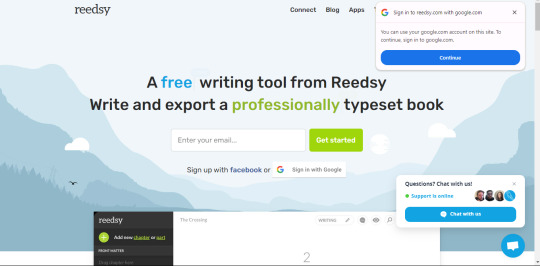
After you've completed the sign-up process and provided some information about yourself, you will be directed to this page. Please locate the "Books" option in the website's header.
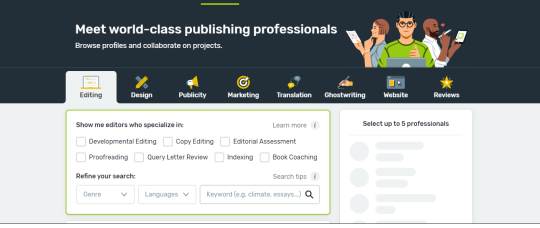
Feel free to give your book/WIP (Work in progress) a title. Remember, it's okay if it's not your final title, as you can always change it in the settings of your book later.
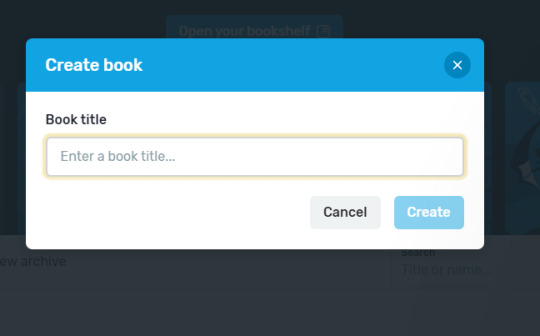
Once you've created it, you can take your time and when you're ready, you can click "Write.”
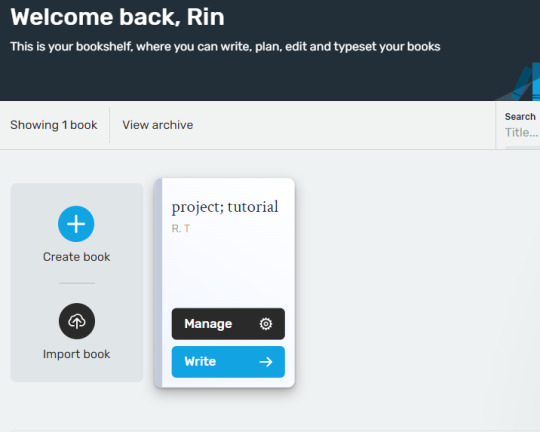
Once you click "Write," you'll be directed to the next page. There, you'll find your chapters, the space to write your manuscript, and a sidebar with various helpful features provided by Reedsy.
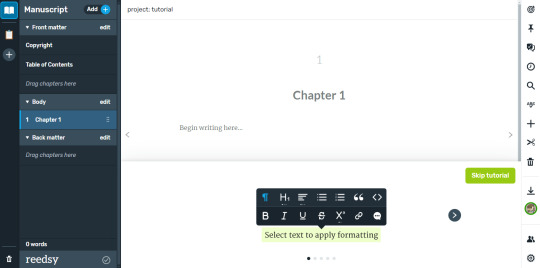
Then, you can choose any name for your chapter that feels meaningful to you.
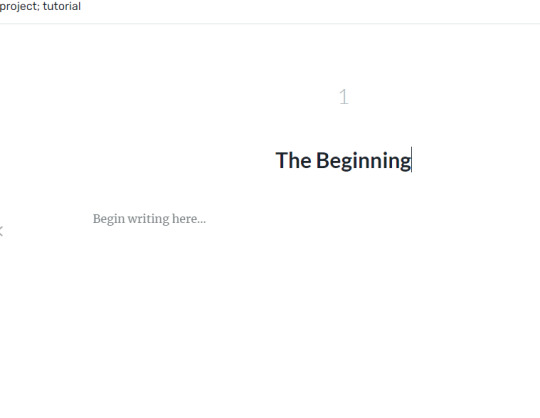
You can also track your writing goals for your specific manuscript or book. This feature provides insights into your writing habits, such as the days you've written and the number of words you've written. You can also set a target word count goal for the manuscript, and you also have the option to set manual writing goals. Additionally, you can check the word count in your current chapter from the bottom of the widget.
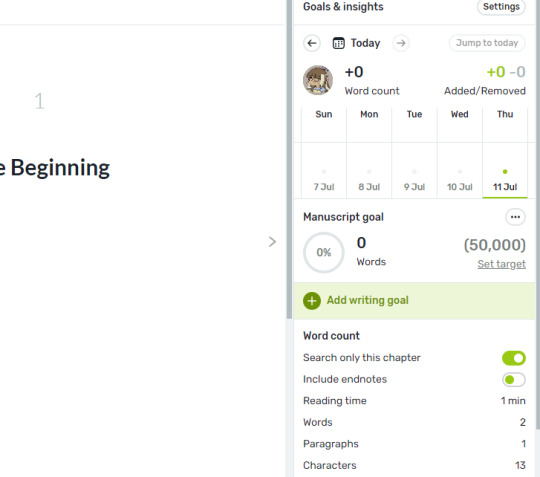
You have the option to set a deadline and choose the days that work best for you to write. This will help Reedsy estimate a realistic word count goal for you.
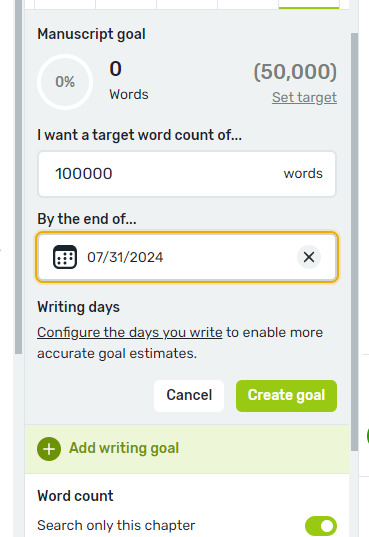
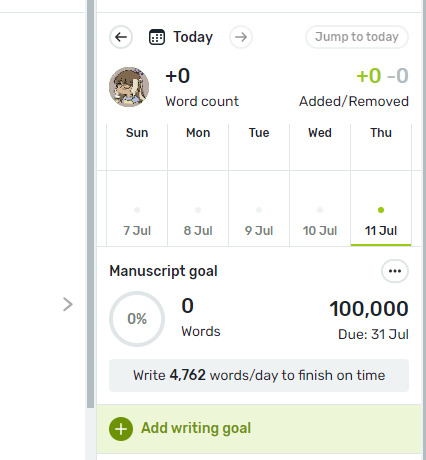
Remember that on Reedsy, there's a new beta feature that allows you to plan and outline your novel without having to leave the website. It offers note cards for you to jot down the plot and scenes from your novel, which can serve as a helpful guide and provide a simple outline to support your writing process.
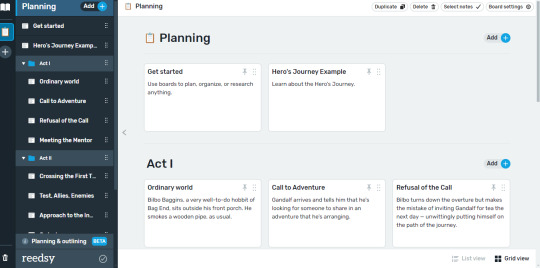
Also, don’t forget the various features available to you when creating your book in Reedsy. For instance, you have the option to include preset formatted pages such as a dedication page and an epigraph that resonates with your story. These features can add a lot of value to your book, and I encourage you to explore them further.
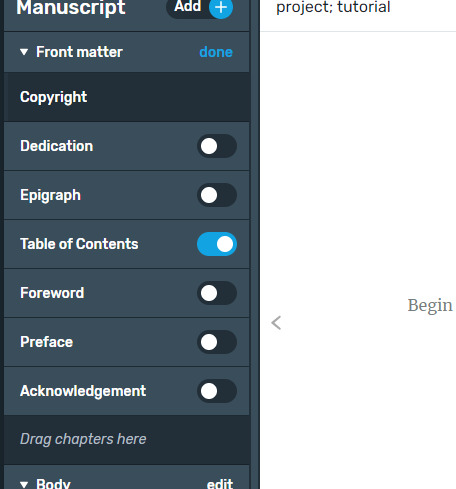
Hopefully this can help you understand the basics of Reedsy Book Editor. One of my favorite writing softwares that is completely FREE!
Hey fellow writers! I'm super excited to share that I've launched a Tumblr community. I'm inviting all of you to join my community. All you have to do is fill out this Google form, and I'll personally send you an invitation to join the Write Right Society on Tumblr! Can't wait to see your posts!
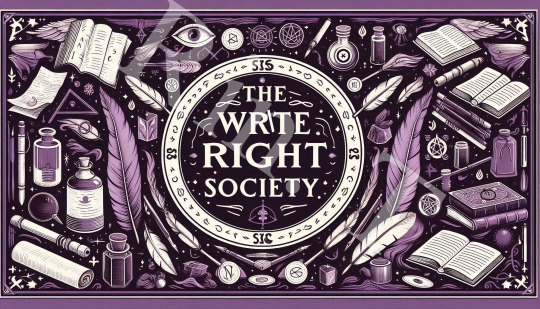
#writeblr#creative writing#thewriteadviceforwriters#writers on tumblr#writer things#writing#writing tips#on writing#writer#writer community#writing tools#writing resources#writing blog#writing advice#fiction writing#novel writing#author#book writing#publishing#indie author#fiction#reedsy#book editor#bookblr#self concept#bookworm#bookstore#books and reading#reading#book quotes
186 notes
·
View notes
Text
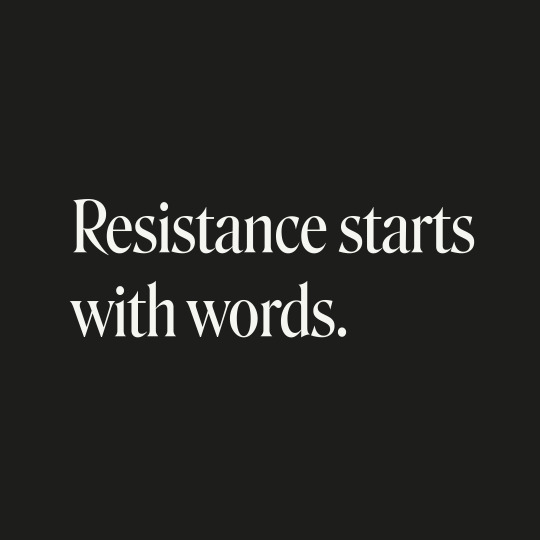
(Read on our blog)
Beginning in 1933, the Nazis burned books to erase the ideas they feared—works of literature, politics, philosophy, criticism; works by Jewish and leftist authors, and research from the Institute for Sexual Science, which documented and affirmed queer and trans identities.

(Nazis collect "anti-German" books to be destroyed at a Berlin book-burning on May 10, 1933 (Source)
Stories tell truths.
These weren’t just books; they were lifelines.
Writing by, for, and about marginalized people isn’t just about representation, but survival. Writing has always been an incredibly powerful tool—perhaps the most resilient form of resistance, as fascism seeks to disconnect people from knowledge, empathy, history, and finally each other. Empathy is one of the most valuable resources we have, and in the darkest times writers armed with nothing but words have exposed injustice, changed culture, and kept their communities connected.

(A Nazi student and a member of the SA raid the Institute for Sexual Science's library in Berlin, May 6, 1933. Source)
Less than two weeks after the US presidential inauguration, the nightmare of Project 2025 is starting to unfold. What these proposals will mean for creative freedom and freedom of expression is uncertain, but the intent is clear. A chilling effect on subjects that writers engage with every day—queer narratives, racial justice, and critiques of power—is already manifest. The places where these works are published and shared may soon face increased pressure, censorship, and legal jeopardy.
And with speed-run fascism comes a rising tide of misinformation and hostility. The tech giants that facilitate writing, sharing, publishing, and communication—Google, Microsoft, Amazon, the-hellscape-formerly-known-as-Twitter, Facebook, TikTok—have folded like paper in a light breeze. OpenAI, embroiled in lawsuits for training its models on stolen works, is now positioned as the AI of choice for the administration, bolstered by a $500 billion investment. And privacy-focused companies are showing a newfound willingness to align with a polarizing administration, chilling news for writers who rely on digital privacy to protect their work and sources; even their personal safety.
Where does that leave writers?
Writing communities have always been a creative refuge, but they’re more than that now—they are a means of continuity. The information landscape is shifting rapidly, so staying informed on legal and political developments will be essential for protecting creative freedom and pushing back against censorship wherever possible. Direct your energy to the communities that need it, stay connected, check in on each other—and keep backup spaces in case platforms become unsafe.
We can’t stress this enough—support tools and platforms that prioritize creative freedom. The systems we rely on are being rewritten in real time, and the future of writing spaces depends on what we build now. We at Ellipsus will continue working to provide space for our community—one that protects and facilitates creative expression, not undermines it.
Above all—keep writing.
Keep imagining, keep documenting, keep sharing—keep connecting. Suppression thrives on silence, but words have survived every attempt at erasure.
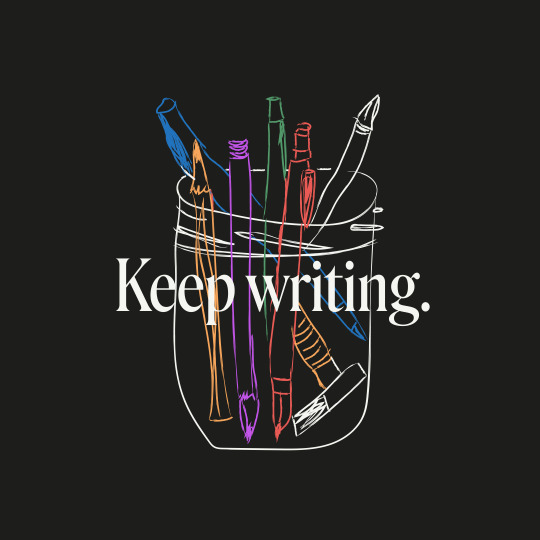
- The Ellipsus team
#writeblr#writers on tumblr#writing#fiction#fanfic#fanfiction#us politics#american politics#lgbtq community#lgbtq rights#trans rights#freedom of expression#writers
4K notes
·
View notes
Text
A Peak into 2024
A Peak into 2024 and some of the upcoming programs we are creating, updating, and revamping for our customers as well as our fellow writers out there. This is going to be the year of informative, fun and, we hope, bigger participation in our programs. The more we all learn about our crafts the better writers and providers we will become. Then too, the more we share, the bigger and better things…

View On WordPress
#A Peak into 2024#Jolenes Book and Writers Talk Podcast#North Florida Writers Tour#Publishing on Draft2Digital#Repurposing Your Social Media Videos#Smashword Marketing Tools#Webs And Blogs For Writers Online Magazine
0 notes
Text
This research, recently published in the journal Nature Geoscience, suggests that studying volcanic ash during eruptions could be used as a tool to forecast tremor intensity.
Continuing work by the research team, which now includes students from the Museum’s Master of Arts in Teaching Earth Science Residency Program, aims to better understand this mechanism at La Palma and worldwide. Read more about their findings in our blog post.
#science#amnh#museum#nature#natural history#fact of the day#did you know#volcano#la palma#volcanology#volcano ash#chemistry#geology#museum of natural history#earth science#stem#new research#canary islands
677 notes
·
View notes
Text
Hello my dear friends♥️
I apologise for the confusion that happened since yesterday as I was giving everything every single thing a second and a huge thought.
I will try to be short and choose my words carefully as much as I can.
The main reason for creating this blog was helping campaign owners to be vetted in front of publishers and doners.
In the past few days I reached a conclusion it's all a " lie " has unfortunately been twisted into a manipulative tactics by certain blogs.
So my dear friends seeking to be vetted to get more cash into your campaigns, please don't get fooled don't let any one play you or use you and be a tool in a very disgusting scheme, it was never about vetting as it was @&& buttering to these blog owners.
As the founding father of this blog I DECLARE that I have nothing to do with any previous vetted campaigns or any might appear in the future.
As for the future of this blog I have no idea for now I know its a huge let down but I trust KARMA and I KNOW the universe works in misteros ways specially the LOA, so in MIDST of the war I will have my pop corn bucket and 3D glasses set down and watch 🤣.
Dear friends♥️ after all of these years I spent in this universe on this rock in this vessel, I owe it to myself to uphold my dignity and self-respect. Quoting Mark Cuban ..... " I'm Out "
مرحباً أصدقائي ال��عزاء ♥️
أعتذر عن الارتباك الذي حدث منذ البارحة حيث كنت أعطي كل شيء، كل شيء، تفكيراً ثانياً وفكراً عميقاً.
سأحاول أن أكون مختصراً وأن اختار كلماتي بعناية قدر المستطاع.
السبب الرئيسي لإنشاء هذه المدونة كان مساعدة أصحاب الحملات على أن يتم توثيق أمام الناشرين والمتبرعين.
في الأيام القليلة الماضية توصلت إلى استنتاج مفاده أن كل هذا "كذبة" للأسف تم تحويلها إلى تكتيكات خادعة من قبل مدونات معينة.
لذا، أصدقائي الأعزاء الذين يسعون إلى التوثيق لجذب المزيد من الأموال لحملاتهم، من فضلكم لا تنخدعوا، ولا تدعوا أي شخص يلعب بكم أو يستخدمكم ، وتكونوا أداة في مخطط مثير للاشمئزاز، فلم يكن الأمر أبداً عن التقييم، بل كان عن "تملق" أصحاب هذه المدونات.
بصفتي الاب المؤسس لهذه المدونة، أعلن أنني لا علاقة لي بأي حملات تم تقييمها مسبقاً أو أي حملات قد تظهر في المستقبل.
أما بالنسبة لمستقبل هذه المدونة، فلا أعرف الآن، أعلم أنه خيبة أمل كبيرة، لكن لن تكون نهاية الطريق بالتأكيد.
أصدقائي الأعزاء ♥️، بعد كل هذه السنوات التي قضيتها في هذا الكون، على هذه الأرض في هذه السفينة، أدين لنفسي بأن أحتفظ بكرامتي واحترامي لذاتي. واستشهد بكلمات مارك كيوبان: "أنا مستقيل".
#gazavetters#free gaza#free palestine#gaza strip#gaza#gravity falls#vetted gfm#gfm#gofundme#gofund.me#chicago#california#artists on tumblr#free palastine#save palestine#palestinian genocide#i stand with palestine#all eyes on palestine
986 notes
·
View notes
Text
I don't want to harp on about the ai art thing but it's absolutely deranged how calcified the kneejerk and regressive critique of the 'nature' of ai art has become just because its what the worst people with 0 class consciousness who work for nintendo and blizzard spew while the actual issues with how ai art is employed in actual work settings are a side note (unless its pretending that the technology is Literally Alive and not a tool being used by your bosses and managers...who are the Actual issue here). there is someone with a piece of rei ayanami fan art that has been edited so she has darker skin trying to wax about not promoting stolen work in my notes. people doing back and forth about permission while their blogs are literally filled with art book scans, club/rave/concert photos of strangers skimmed from probably myspace/deviantart/photobucket, stim/mood boards full of uncredited images and clipped videos, transparent .pngs with no source, cropped/edited manga panels (smaller publishers sometimes outright discourage this lol but you'd never know since youre reading it illegally to begin with), fanart of fan fiction (bro thats twice the derivative) littering their blogs. someone straight up saying that feeling inspired to draw because of a piece of ai generated artwork is bad because your connection to the source is "severed" like making art is inherently some religious activity. I tend to think of a lot of ai art as slop that bloats search results but the overton window has been skewed so painfully in some bizarrely un-self aware direction that the neutral option is reminding people how they literally interact with the internet.
1K notes
·
View notes
Text
Tuesday, February 11th, 2025
🌟 New
We now send a notification if your post gets reblogged to a community. To strike a balance between keeping posters informed and maintaining the safe space we want for communities, these notifications will only be sent if: you’re a member of the community, the community is free to join or can be requested to join, or the community is public and you have an invitation.
When filters are applied to Activity, you’ll now see a blue dot indicating that filters are in use.
Community moderation tools are now a native experience in the iOS and Android apps. This means we’re no longer relying on the in-app browser, so your experience with community moderation tools will be noticeably more responsive.
🛠 Fixed
Published submissions will now include a small version of the submitting author’s avatar over the publishing blog’s avatar. It was always intended for this to display, but something broke along the way.
🚧 Ongoing
We are aware that some users from Turkey are being blocked from accessing [tumblr] and we’re currently investigating why that is. Please contact support if you’re affected!
We are aware that some email verification links are broken and we’re currently investigating why that is. Please contact support if you’re affected!
🌱 Upcoming
No upcoming launches to announce today.
Experiencing an issue? Check for Known Issues and file a Support Request if you have something new. We’ll get back to you as soon as we can!
Want to share your feedback about something? Check out our Work in Progress blog and start a discussion with other users.
Wanna support Tumblr directly with some money? Check out Premium and the Supporter badge in TumblrMart!
262 notes
·
View notes
Text
Reverse engineers bust sleazy gig work platform

If you'd like an essay-formatted version of this post to read or share, here's a link to it on pluralistic.net, my surveillance-free, ad-free, tracker-free blog:
https://pluralistic.net/2024/11/23/hack-the-class-war/#robo-boss

A COMPUTER CAN NEVER BE HELD ACCOUNTABLE
THEREFORE A COMPUTER MUST NEVER MAKE A MANAGEMENT DECISION
Supposedly, these lines were included in a 1979 internal presentation at IBM; screenshots of them routinely go viral:
https://twitter.com/SwiftOnSecurity/status/1385565737167724545?lang=en
The reason for their newfound popularity is obvious: the rise and rise of algorithmic management tools, in which your boss is an app. That IBM slide is right: turning an app into your boss allows your actual boss to create an "accountability sink" in which there is no obvious way to blame a human or even a company for your maltreatment:
https://profilebooks.com/work/the-unaccountability-machine/
App-based management-by-bossware treats the bug identified by the unknown author of that IBM slide into a feature. When an app is your boss, it can force you to scab:
https://pluralistic.net/2023/07/30/computer-says-scab/#instawork
Or it can steal your wages:
https://pluralistic.net/2023/04/12/algorithmic-wage-discrimination/#fishers-of-men
But tech giveth and tech taketh away. Digital technology is infinitely flexible: the program that spies on you can be defeated by another program that defeats spying. Every time your algorithmic boss hacks you, you can hack your boss back:
https://pluralistic.net/2022/12/02/not-what-it-does/#who-it-does-it-to
Technologists and labor organizers need one another. Even the most precarious and abused workers can team up with hackers to disenshittify their robo-bosses:
https://pluralistic.net/2021/07/08/tuyul-apps/#gojek
For every abuse technology brings to the workplace, there is a liberating use of technology that workers unleash by seizing the means of computation:
https://pluralistic.net/2024/01/13/solidarity-forever/#tech-unions
One tech-savvy group on the cutting edge of dismantling the Torment Nexus is Algorithms Exposed, a tiny, scrappy group of EU hacker/academics who recruit volunteers to reverse engineer and modify the algorithms that rule our lives as workers and as customers:
https://pluralistic.net/2022/12/10/e2e/#the-censors-pen
Algorithms Exposed have an admirable supply of seemingly boundless energy. Every time I check in with them, I learn that they've spun out yet another special-purpose subgroup. Today, I learned about Reversing Works, a hacking team that reverse engineers gig work apps, revealing corporate wrongdoing that leads to multimillion euro fines for especially sleazy companies.
One such company is Foodinho, an Italian subsidiary of the Spanish food delivery company Glovo. Foodinho/Glovo has been in the crosshairs of Italian labor enforcers since before the pandemic, racking up millions in fines – first for failing to file the proper privacy paperwork disclosing the nature of the data processing in the app that Foodinho riders use to book jobs. Then, after the Italian data commission investigated Foodinho, the company attracted new, much larger fines for its out-of-control surveillance conduct.
As all of this was underway, Reversing Works was conducting its own research into Glovo/Foodinho's app, running it on a simulated Android handset inside a PC so they could peer into app's data collection and processing. They discovered a nightmarish world of pervasive, illegal worker surveillance, and published their findings a year ago in November, 2023:
https://www.etui.org/sites/default/files/2023-10/Exercising%20workers%20rights%20in%20algorithmic%20management%20systems_Lessons%20learned%20from%20the%20Glovo-Foodinho%20digital%20labour%20platform%20case_2023.pdf
That report reveals all kinds of extremely illegal behavior. Glovo/Foodinho makes its riders' data accessible across national borders, so Glovo managers outside of Italy can access fine-grained surveillance information and sensitive personal information – a major data protection no-no.
Worse, Glovo's app embeds trackers from a huge number of other tech platforms (for chat, analytics, and more), making it impossible for the company to account for all the ways that its riders' data is collected – again, a requirement under Italian and EU data protection law.
All this data collection continues even when riders have clocked out for the day – its as though your boss followed you home after quitting time and spied on you.
The research also revealed evidence of a secretive worker scoring system that ranked workers based on undisclosed criteria and reserved the best jobs for workers with high scores. This kind of thing is pervasive in algorithmic management, from gig work to Youtube and Tiktok, where performers' videos are routinely suppressed because they crossed some undisclosed line. When an app is your boss, your every paycheck is docked because you violated a policy you're not allowed to know about, because if you knew why your boss was giving you shitty jobs, or refusing to show the video you spent thousands of dollars making to the subscribers who asked to see it, then maybe you could figure out how to keep your boss from detecting your rulebreaking next time.
All this data-collection and processing is bad enough, but what makes it all a thousand times worse is Glovo's data retention policy – they're storing this data on their workers for four years after the worker leaves their employ. That means that mountains of sensitive, potentially ruinous data on gig workers is just lying around, waiting to be stolen by the next hacker that breaks into the company's servers.
Reversing Works's report made quite a splash. A year after its publication, the Italian data protection agency fined Glovo another 5 million euros and ordered them to cut this shit out:
https://reversing.works/posts/2024/11/press-release-reversing.works-investigation-exposes-glovos-data-privacy-violations-marking-a-milestone-for-worker-rights-and-technology-accountability/
As the report points out, Italy is extremely well set up to defend workers' rights from this kind of bossware abuse. Not only do Italian enforcers have all the privacy tools created by the GDPR, the EU's flagship privacy regulation – they also have the benefit of Italy's 1970 Workers' Statute. The Workers Statute is a visionary piece of legislation that protects workers from automated management practices. Combined with later privacy regulation, it gave Italy's data regulators sweeping powers to defend Italian workers, like Glovo's riders.
Italy is also a leader in recognizing gig workers as de facto employees, despite the tissue-thin pretense that adding an app to your employment means that you aren't entitled to any labor protections. In the case of Glovo, the fine-grained surveillance and reputation scoring were deemed proof that Glovo was employer to its riders.
Reversing Works' report is a fascinating read, especially the sections detailing how the researchers recruited a Glovo rider who allowed them to log in to Glovo's platform on their account.
As Reversing Works points out, this bottom-up approach – where apps are subjected to technical analysis – has real potential for labor organizations seeking to protect workers. Their report established multiple grounds on which a union could seek to hold an abusive employer to account.
But this bottom-up approach also holds out the potential for developing direct-action tools that let workers flex their power, by modifying apps, or coordinating their actions to wring concessions out of their bosses.
After all, the whole reason for the gig economy is to slash wage-bills, by transforming workers into contractors, and by eliminating managers in favor of algorithms. This leaves companies extremely vulnerable, because when workers come together to exercise power, their employer can't rely on middle managers to pressure workers, deal with irate customers, or step in to fill the gap themselves:
https://projects.itforchange.net/state-of-big-tech/changing-dynamics-of-labor-and-capital/
Only by seizing the means of computation, workers and organized labor can turn the tables on bossware – both by directly altering the conditions of their employment, and by producing the evidence and tools that regulators can use to force employers to make those alterations permanent.

Image: EFF (modified) https://www.eff.org/files/issues/eu-flag-11_1.png
CC BY 3.0 http://creativecommons.org/licenses/by/3.0/us/
#pluralistic#etui#glovo#foodinho#alogrithms exposed#reverse engineering#platform work directive#eu#data protection#algorithmic management#gdpr#privacy#labor#union busting#tracking exposed#reversing works#adversarial interoperability#comcom#bossware
352 notes
·
View notes
Text
a guide on becoming an academic weapon. ᥫ᭡



being an academic weapon is one of the top goals for a lot of us. we strive for excellence and hope to achieve top marks in all our classes so that we can continue to reach whatever it is that may be our final goal like getting into a top university, graduating as valedictorian, or getting into the career of our dreams. this guide will be about all the habits of an academic weapon and what tools & methods you can incorporate into your study/school routine!

let’s begin …
୨ৎ — lecture preperation
pre-reading chapters/lecture powerpoints
skim through chapters, make note of important headings, highlight key terms! if you can, look through any powerpoints that will be used for lecture notes as well!
jot down quick notes like vocab terms, key pieces of information, and/or any questions on topics you want to understand further!
read chapter summaries & highlight important headings
set up your notes
if you like to use different note-taking methods, try setting up your pages beforehand! this will take up less time while in class and you’ll come in already prepared to take any notes!
i have a post on note-taking here on my blog that you can refer to for a few different note-taking methods!
begin homework assignments
my professor will publish homework assignments on sunday mornings for each week that we’re learning new material, so if your teacher does something similar or you’re taking an all-online course, start by working ahead on those homework assignments!
getting a head start can …
help with having a better understanding of the material by the time of your lecture
help you apply the knowledge you learned from the assignments into your lecture
help you come up with questions for better comprehension of the topics
help you manage your time better
reduce your work load later on
start creating flashcards
if you’re required to know key terms/vocab, start creating flashcards ahead of time! this will help you get familiar with the vocabulary that’s related to the material and will jumpstart that increase in understanding of what’s to come in your lecture or any required readings!
୨ৎ — smart studying
we’re always told to “work smarter, not harder” and i believe that doing so can help you achieve success more quickly and efficiently! while it’s great to dedicate a lot of time to your studies, it’s not always optimal. spending hours upon hours working with no breaks in between and forgetting to take care of yourself can lead to burn out, so it’s important to find ways to study that not only help you study more efficiently but also work with your learning type!
trial periods
there are a plethora of study methods out there that you can try out to see which ones work the best for you!
posts with study methods ( + how-to’s ) …
how to study effectively - @milkoomi
non-basic study techniques - @glowettee [ this post is PHENOMENAL! mindy includes so many unique study methods— some that she created herself! — that give an entirely new way to study & learn material! 100/10 recommend reading through this! ]
take some time each week to try out a new study method while still incorporating techniques you’re used to! pick one study method for the week & test it out at the start of your study time slot.
trying out new methods/techniques also help with keeping your study routine fresh and it creates a bigger study arsenal for yourself! having multiple ways of studying just means having a variety of ways to learn the material! every method has its benefits, some will help with memorization while others can help with better comprehension!
pick your big 3
amongst all the different study methods out there, you should pick your top 3 techniques that help you the most! they’ll be your ultimate go-to study methods!
factors to think about for your big 3 …
how much time does the method/technique take?
what is your success rate with the method/technique?
how easy was it for you to incorporate the method/technique into your study routine?
your big 3 study methods should help with maximizing your productivity time, help you achieve your desired grades, & be within your limits while studying, meaning it shouldn’t make you feel like you’re stretching yourself thin because, again, we need to study smarter, not harder!
my personal big 3:
Feynman Technique - teaching others
active recall - practice questions & flashcards
knowledge application - making real life connections
textbook tests
i feel like a lot of us view textbooks as these giant, daunting bricks we’re forced to lug around, but they’re required material for a reason! they’re more than just a giant book of “boring” chapters!
a lot of textbooks have mini assessments at the end of every chapter, so take some time to do them! they’re just practice tests and they’ll be extremely useful for active recall (plus, you don’t have to worry about creating your own practice questions!)
୨ৎ — change your mindset
being an academic weapon means having the mindset of an academic weapon. the way you think and feel about your schooling plays a huge role in this!
“i have to” to “i get to”
treating your academics and studies as if they’re chores will make you lose your motivation and passion for learning. getting to have an education is a privilege and i feel like a lot of us forget that. be thankful that you get to pursue an academic career and get the chance to further your education! instead of “i have to study” say, “i get to study”!
getting an education is a beautiful opportunity in life, so practice gratitude when it comes to learning!
self care
i will always advocate for self care because you can’t do your best when you aren’t at your best. being an academic weapon doesn’t mean throwing your entire life away or setting your health to the side to solely focus on your studies. going to the extremes for your academics shouldn’t be normalized.
you don’t need to pull all-nighters every other day to study, you don’t need to work/study for 14 hours, you don’t need to harshly motivate yourself to get back to studying— you need to treat yourself kindly and shoe yourself gentle care.
get enough sleep
shower, do skincare, brush your teeth
keep yourself hydrated & well-fed
get your body moving
make time for your hobbies & things that make you happy
remember to take breaks when your mind & body needs them
don’t sacrifice your well-being to get ahead on your road to success. you’ll only bring yourself farther behind if you neglect your health.
final notes —
becoming an academic weapon is 60% mindset, 40% work ethic. you have to motivate yourself to give your best work, but! you have to take care of your mind and body before you even think about giving your best work. be kind to yourself, affirm yourself that you can do this! you are more than capable of achieving academic success!
the work you put in as an academic weapon has to be work you’re proud of. be sure that you’re using your time wisely, that you free yourself from distractions while studying, that you give yourself enough time to get work done (and take breaks & do something for yourself!), and that you always give it your all when you’re completing assignments, writing notes, or studying.
i know that you’ll be able to truly be an academic weapon! you have what it takes! you just have to remind yourself of your own potential.
with lots of love, faustina 🌷

#milkoomis#studyblr#study blog#study tumblr#study tips#academicblr#academics#college#college life#school motivation#school tips#academic weapon#academia#light academia#dark academia#academia aesthetic#romanticizing school#romanticizing studying#it girl#that girl#it girl tips#becoming that girl
267 notes
·
View notes
Text
This info was of some surprise to folks on Bluesky, so I'm going to repeat it here in light of the sheer number of "the Internet Archive was an uncomplicated good apart from this one weird move" posts I've seen...
Are we all aware that IA has been gradually pushing the dogma that generative AI is a net public good, and has been feeding books, music, and video into AI?
This article is about how IA is actively using AI in their archives. It's an interview with Brewster Kahle, founder and Board Chair of IA. Choice quote:

This is the blog post about the comments they submitted to the US copyright office arguing against any new copyright regulations for AI. Some more choice quotes:


You can guess how I feel about framing the writers and artists whose work BUILT generative AI as "workers" who just need to be "retrained."
Last year they hosted a zoom panel called "Generative AI Meets Open Culture: Opportunities, Challenges & Ethical Considerations." Multiple visuals were AI-generated art, the panelists were asked to avoid discussing copyright. It's an hourlong panel and I couldn't find a transcript, so I skipped around to see if anyone addressed the elephant in the room. I found at ~32 minutes, a vague gesture at acknowledging it wasn't great if you tried to replicate an artist's style, but fine if you just wanted generic art.
(If anyone finds a more concrete statement in there, and/or a transcript, I'd love to know! The tenor I got was overall "look at how cool these tools are and let's talk about how they're a public good.")
At the end of January 2024, they hosted "Public Domain Day," including a panel on incorporating Generative AI in art. They invited two artists who utilize Generative AI, and a publisher whose books go immediately into the public domain. More quotes from their own writeup:



This was an event in celebration of public domain, but as far as I can tell, they've more or less avoided even acknowledging that creators are actively being harmed by Gen AI. Again, if anyone can find a clearer statement, please share it.
Another wrinkle in this is that Kahle, on behalf of the Internet Archive, sued the US Government in 2004, challenging the law that automatically granted and renewed copyright to a creator. Previously, copyright was opt-in only, had to be regularly renewed by the holder, and cost money to do so. The case went all the way to the Supreme Court in 2007, but was dismissed. (Scroll down to Docket 07-189, Kahle v Mukasey, for court filings.)
To be clear, this is the law that means you automatically own your own work. It's not a shock that Kahle's suit failed. But if Kahle had won, artists who didn't pay to secure and maintain copyright over their work would be SOL right now in the lawsuits against generative AI image and text scrapers.
So yeah. My tiny violin for IA continues to shrink.
401 notes
·
View notes
Text
General Player Advice For RPGs
I published this in my newsletter here a while back, and discourse reminded me I wanted to put it more public. I probably should get around to actually doing a proper blog for this kind of stuff. You can sign up to the newsletter here.
One of the things which I’ve been chewing over since getting back into RPGs is that there’s so much advice for GMs and so little advice for players. I keep thinking over why - though the whys aren’t what I’m about to write about. However, some other folk think any worthwhile advice is system/genre specific.
This got me chewing over whether I agree with that. As the list below shows, I don’t.
The first four are ones where I think I succeeded, and as principles generally guide you towards better play no matter what game you’re playing. The last three are mainly applicable to games with a significant story component (the last especially). There’s a few more I played with, but they were more about being a good at the table generally – about being a better player in any game rather than specifically about role-playing games. I also avoided ones which were more GM-and-player advice rather than just player advice (if there’s a problem in game, communicate out of game, use appropriate safety tools, etc).
I also didn’t include “Buy The GM Stuff”.
Anyway – here they are. See what you think.
GENERAL PLAYER PRINCIPLES FOR BETTER PLAY
1) Make choices that support the table’s creative goals
If you’re playing a storygame, don’t treat it like a tactical wargame. If you’re playing a tactical wargame, don’t treat it like a storygame. If it’s bleak horror, don’t make jokes. If you’re in a camp cosy romp, don’t bring in horror. It also varies from moment to moment – if someone’s scene is sincere, don’t undercut it.
2) Be A Fan of The Other Characters
This is GM advice in almost all Powered By the Apocalypse games – for the GM to be a fan of the characters. It’s a good trait for a player to cultivate. Be actively excited and interested in the other characters’ triumphs and disasters. Cheer them on. Feel for them. Players being excited for other players always makes the game better. Players turning off until it’s their turn always makes it worse.
3) Be aware of the amount of spotlight time you’re taking
This is a hard one for fellow ADHD-ers, but have an awareness of who is speaking more and who is speaking less. A standard GM skill is moving spotlight time around to players who have had less time. Really good players do this too. Pass the ball.
4) Learn what rules apply to you, to smooth the game, not derail it.
To stress, this isn’t “come to the table knowing everything” but learning the rules that are relevant to your character along the way, especially if they are marginal (looking at you, Grappling and Alchemy rules). Doing otherwise adds to the facilitator’s cognitive load and hurts the game’s flow. The flip is being aware that knowing stuff isn’t an excuse to break the game’s flow with a rules debate either – that’s an extension of the third principle.
5) Make choices which support other characters’ reality
If someone’s playing a scary bastard, treat them like a scary bastard. If they’re meant to be the leader, have your character treat them like the leader , for better or worse. A fictional reality is shared, and you construct it together.
6) Ensure The Group Understands Who Your Character Is
This is the flip of the above – having a character conception that is clear enough that everyone gets who you are, what you want to do and how you want to do it. If you don’t, the table will be incapable of supporting your choices. This links to…
7) If asked a preference in a story game, a strong choice is almost always better than a middling choice.
Don’t equivocate. If asked “You’ve met this person before. How do you feel about him?” either “I love him” or “I hate him” is better than anything middling. The exception is if it’s something you’re really not interested in pursuing.
630 notes
·
View notes
Text
GUESS THE AUTHOR IS BACK!
Get to your keyboard and get those betting slips ready, because it’s Guess The Author time again! This is the third annual GTA! Wow!
But what IS Guess the Author? It's a writing challenge and a guessing game, all in one!
Our fabulous authors will have until THE DEADLINE to write a new work (or dust off an unpublished thing you’ve had rotting in your drafts, we won’t judge) and post it to our anonymous collection.
Don’t worry if you don’t have any clue who’s who- we’ll publish a list of our authors to make guessing easier. From there, readers will have one week to guess who wrote what!
After that week, we’ll reveal the collection in full and you can see how you did! It’s like Guess Who, but with more block men and word documents.
And without further ado:
THE DEADLINE WILL BE JULY 6TH, 2025, AT MIDNIGHT EDT.
(Here’s a handy little countdown clock for you!)
You have until THE DEADLINE to get your work in the collection, and you can find instructions to do that by checking our handy post right here!
All that fun aside, we do have a few rules:
-THERE WILL BE ABSOLUTELY NO EXTENSIONS TO THE DEADLINE. We will not make exceptions. If your work isn’t in the collection by THE DEADLINE, it’s not getting in. If you don’t make it, you shouldn’t despair- post it anyway! This challenge is all about getting people writing, not some silly collection. That said, we will not reopen the collection for any reason.
-Your work must be Hermit-centric! This is a Hermitcraft event, we’re Hermitcraft fans. Feel free to have other people show up, but the focus should be on at least one Hermit! (NPC’s or Hermit characters such as NPC Grian, Grimdog, Goatman, EX, Hels, and so on are all fine!)
-No smut. Period. Sorry. Cut around it, fade to black, heavily imply it, just no onscreen NSFW action. Everything else is fine!
-Use of AI tools such as ChatGPT or whatever flavour of the Plagiarism Machine is popular this week is strictly banned. This is a writing challenge for human creativity, and we want to hear your own unique voice! Any submitted works found to be AI-generated will be removed from the collection and you will be blacklisted from this and future challenges.
-Don’t do anything that breaks TOS. Tumblr’s or AO3’s.
-Minimum wordcount is 50 words. There is no maximum wordcount.
-A maximum of ten posted works per author, please! If you want to have more, consider creating a single “Collection” piece where each chapter is a new work. Thank you!
-The mod team reserves the right to remove works from the collection that violate these rules or violate the spirit of the challenge. That means, for example, please don’t add a work that’s a part of your ongoing series! That’s just spoiling the fun.
-If AO3 implodes on launch day again, the mod team reserves the right to scream.
Other than that, do what you like! We don’t care! There are no rules around content. Horror, shipping, high school AU’s, space opera, Shakespeare…go nuts! We can’t wait to see what you create!
You’re encouraged to lie, misdirect people, write in another author’s style, write about Hermits you don’t usually write! Any trick you want to use is fair game.
For those wanting a more formal schedule for their calendars, here it is:
May 4th, 2025, 12:00 PM EDT: Event begins, collection opens! That’s right now!
July 6th, 2025, 12:00 AM EDT: THE DEADLINE. Writing period ends, collection closes, and guessing begins!
July 13th 2025, 12:00 AM EDT: Guessing concludes! All works are de-anonymized, and readers and writers celebrate! All works will be promoted on the blog for readers to pick through at their leisure.
If you have any questions, don’t hesitate to ask the blog. We have five mods:
-Mod Bayonet
-Mod Butterfly Knife
-Mod Machete
-Mod Rapier
-Mod 🔪
What are you waiting for? Get out there and get writing! Can’t wait to see you in the collection!
Lastly, if you want to chat about your work anonymously, head over to our NEWLY OFFICIAL buddy blog @hcguesstheauthormessageboard!
@mcytblrsource
130 notes
·
View notes
Text
Good Omens graphic novel update: December 2024
We promised a graphic novel treat for December to send off 2024, which we have at the end of the update, so let's dive in!
Colleen has been working diligently ahead of the graphic novel going to print next month, which she discussed over on Patreon. For those looking for more behind the scenes on both Good Omens and Colleen's work more broadly, we recommend either following her Substack, or subscribing via Patreon, as she approaches the finish line.
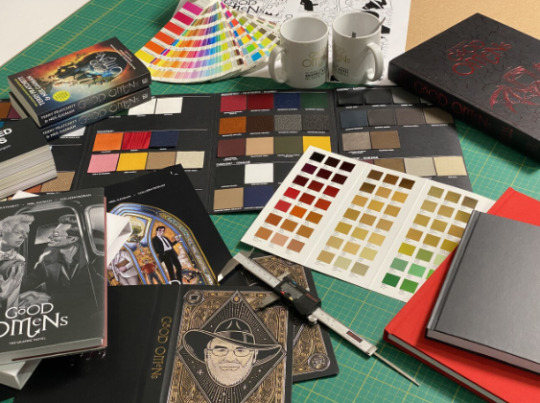
A snapshot from our production HQ where dummy books of the graphic novel, slipcase and other editions of Good Omens have been arriving thick and fast. The graphic novel (slipcased version shown) has quite the heft to it. It's going to be such a magnificent object inside and out.
Here, we're testing out the various papers, finishes, embellishments and more – everything is falling into place!
Merch-wise, some more delights. The A.Z. Fell & Co tote bag design is in, one side in celebration of our favourite angelic bookseller, the other as if it's been purchased from the bookshop itself, so you can take your pick.

We've got more pins that will be available in the 3-pin set add ons. While the full list will be available in 2025, we're happy to share a few more to get excited about:

On the trading card front, have a look at some of the base deck designs by Steve Gregson and Kirsty Hunter in situ as this all comes together rather nicely, and causes a heated game or two behind the scenes.
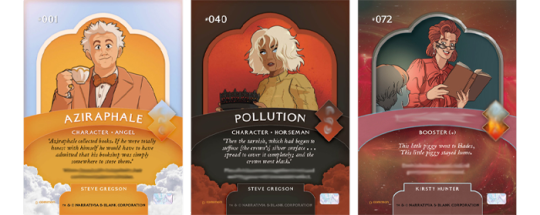
And, a quick admin note to wrap up that we always recommend checking the FAQ page as a first port of call for any queries. If you have questions tied to specific tiers, we'd suggest checking the last few updates if your answer can't be found on the FAQ. If there is any information required for your pledge, we will be in touch. We will be back at full steam in the New Year!
Thank you.
So, to wrap up this year's updates, we give you the draft of the full first scene of the graphic novel, artwork by Colleen Doran and lettering by Lois Buhalis. If you'd like to wait until the graphic novel publishes in Spring, skip everything after the ducks!

To 2025 🥂
Until next time.

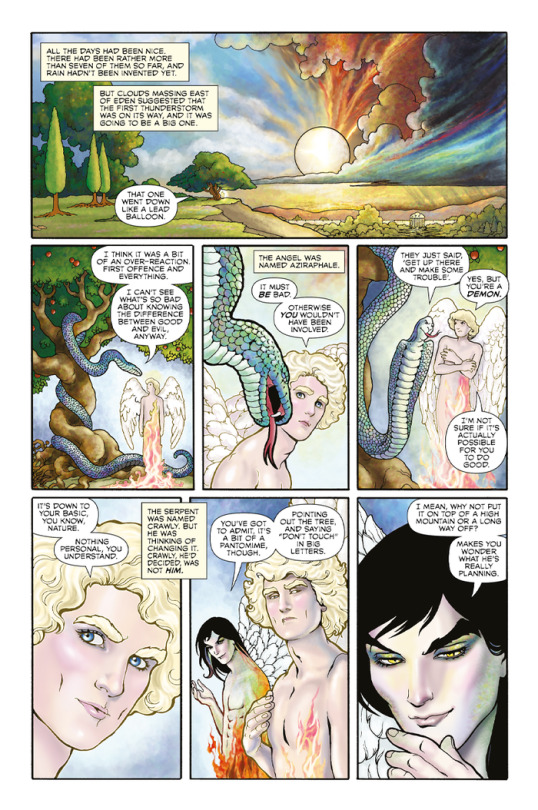

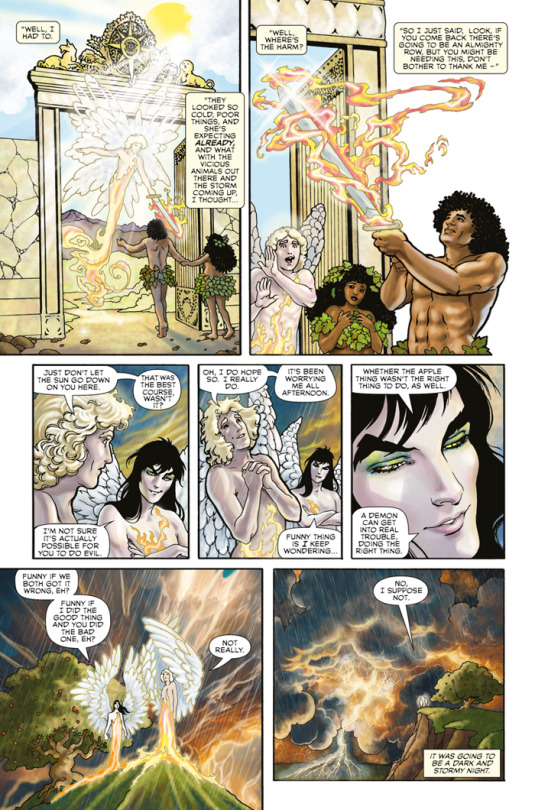
+ post from Colleen Doran:
Good Omens: You Get...Stuff Like This

In the most recent Good Omens update at the Kickstarter, a few people got upset at the suggestion that you have to get past my paywall here to see Good Omens updates.
Except you really don't, and the post doesn't actually say you do. You get a bit more, like pics of my studio, a discussion of tools and process - but not all of that is exclusively about Good Omens.
I think the Dunmanifestin team just wanted to draw a little attention to my blogs and other works, for which I am very grateful.
As my Patreon supporters already know, Good Omens info posted here gets to the Substack and Kickstarter eventually. And since most of my posts here aren't just about Good Omens, but my other projects and personal stuff, as well as links to our weekly Virtual Art Studio sessions, I think I'm justified in keeping that material behind a paywall.
In fact, I don't think I've posted much stuff about Good Omens since the summer: pages of flats like the one you see above, a few studio photos, and color tweaks.
Also, me boo-hooing about my nerves and health.
But for those who feel left out missing even this small amount of stuff, then the screen shot above is for you.
That's called a flat.
It's a prelim color before adding final color.
Here's what the final color looks like.

So I've posted a handful of this sort of thing since this summer, but frankly, there's even more of my sketches and so on posted at my Instagram that aren't here at all.
For those who don't know, I am doing most of the color myself on the book, but I am working with assistants. I'm not sure how much the Dunmanifestin team wants out there before the big reveals, but here's a snippet of a sky.
In the first image, my flat color.

And after my assistant worked on it.

Here, I've done a repaint. Sometimes I do very extensive repaints after the assistant works on a page. Sometimes not so much. I didn't use assistants on many pages at all. About 80% of the labor on the color of the book is my work.
However, the assistants have been a big help, and I am very appreciative of them.

I will make a point to go through all my prior posts and get every single bit of art that you haven't seen and make it public for all of you in the coming weeks. I need to excise it from previous posts. As I respect the privacy of all my readers, I never make prior posts public without their permission as they may not want their comments or identities to be public.
Thanks so much for everything!
165 notes
·
View notes
Text
Online Writing Resources
YouTube:
Abbie Emmons: A published author. Her videos have great tips and advice for plot and character development.
Hello Future Me: Mostly worldbuilding tips, but very in-depth, with specific examples.
Ellen Brock: A professional freelance editor who provides help with all aspects of writing—outlining, worldbuilding, character writing, plot development, publishing, and generally answering any questions writers may have.
Terrible Writing Advice: Great writing advice, if you can handle the sarcasm.
Podcasts:
Writing Excuses: Albeit fast-paced, the given writing advice is quite useful. There's multiple seasons addressing topics such as story structure, characters, and genres, amongst many others.
The Creative Penn: This podcast is run by author Joanna Penn, who shares the lessons she learned in her own journey and advice for writing and publishing your novel.
I Should Be Writing: Interviews with various authors, and encouragement for aspiring writers.
Story Grid: Outlining methods, writing tips, editing advice, and analysis of various works.
Blogs:
Creativity Portal: Author interviews, creativity generators, writing prompts and templates, and various other writing resources.
Now Novel: Aside from writing tools, this website has multitudes of posts about characters, dialogue, narration, plotting, editing, and story structure, as well as writer motivation.
Helping Writers Become Authors: Tips on dialogue, characterisation, outlining, plot development, structuring, character arcs, and common writing mistakes to avoid.
Almost an Author: This website is great help for aspiring authors, with advice that ranges from genres to motivation for writers to guidance for making writing a career.
Hope this is helpful! I'd love to hear any other resources you use or are familiar with. Happy writing ❤
Previous | Next
#writeblr#writing#writing tips#writing advice#writing help#writing resources#creative writing#writer resources#author resources#writer stuff#how to write#writing techniques#story writing#author#author things#writer things#writer help#deception-united
486 notes
·
View notes